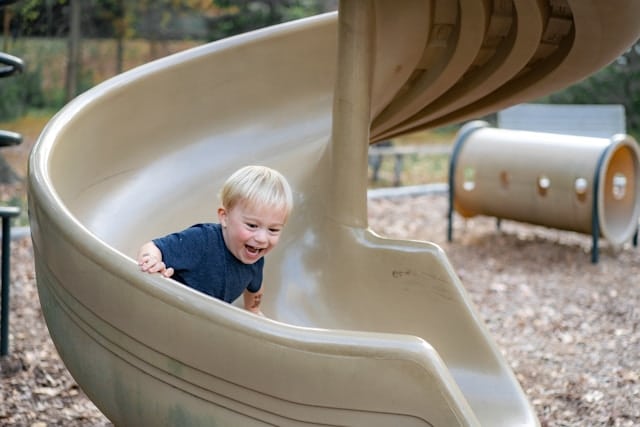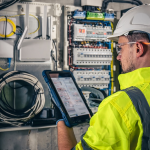As parents, educators, or caregivers, ensuring that our children spend their time in a safe and comfortable environment is our primary concern, especially when it comes to their play area. When children, especially toddlers, are at play, they’re not just having fun but are also learning and developing key life skills. Therefore, crafting a cozy and safe play space is critical for their overall development. This article will guide you through the best ways to create such an area that aids their learning while keeping them safe.
Creating a Safe Environment
The first step towards creating an ideal play area for toddlers is ensuring its safety. An environment that is free from potential hazards will allow your children to explore and play without fear or harm.
Also to see : How Can You Use Smart Lighting to Enhance Mood and Productivity in a Home Office?
Choosing The Right Materials
Our focus on safety should extend to the materials used in the play area. When selecting toys, avoid those with small parts that could pose a choking hazard. Toys should also be free from sharp edges and toxic materials. The play area surface should ideally be made of a soft material to cushion any potential falls. Rubber mats or carpeted floors are excellent choices.
Storage is an often overlooked aspect when considering safety. Secure, low-level storage solutions help keep the space tidy and prevent accidents due to tripping over toys. Ensure all furniture in the play area is sturdy and not likely to topple over.
Topic to read : What’s the Best Way to Integrate Smart Security Cameras for Outdoor Monitoring?
Incorporating Learning Elements
A well-designed play area is not just a safe space but also a venue for learning and development. By incorporating certain elements, you can stimulate your child’s intellectual and sensory progress.
Sensory Activity Stations
Play areas that feature sensory activity stations can do wonders for a child’s development. These activities could involve materials of different textures, shapes, and colors. For instance, a sand or water station can provide tactile sensory experience, while a color sorting station can help develop visual perception skills.
Remember, interaction is key. The play area should encourage children to touch, feel, and manipulate objects, helping them understand their environment and the world around them.
Making it Comfortable
Above all, the play area should be a place where toddlers feel comfortable and at ease. It should be inviting, warm and a space where they are free to express themselves.
Creating a Cozy Space
Adding elements like soft rugs, pillows, and blankets can make the play area more cozy and inviting. A tent or a small, child-sized chair can provide a sense of privacy and ownership, making them more inclined to spend time in the space. Also, consider the lighting. Natural light is best, but if it’s not available, ensure the area is well-lit without being harsh.
Considering the Child’s Interests
When designing the play area, always take into account the child’s interests. Personalizing the space to their liking will make them feel more comfortable and eager to engage in play and learning activities.
Tailoring the Space
If your child loves books, create a small reading corner. If they are fascinated by art, provide them with an easel and art supplies. By tailoring the space to your child’s interests, you’ll be encouraging them to spend time there, fostering their development in the fields they naturally gravitate towards.
The Role of Routine and Organization
It’s important to incorporate a sense of routine and organization in the play area. This doesn’t necessarily mean enforcing a strict schedule, but rather creating a sense of predictability to help children feel secure.
Keeping Things in Order
Organizing the play area with designated spots for each activity and proper storage solutions can help children understand where everything belongs. This not only maintains order but also fosters responsibility, as they learn to keep their play area clean and organized.
In conclusion, creating a safe, comfortable and stimulating play area for your toddlers involves thoughtful consideration of the space, materials, and activities, always keeping in mind their safety, interests, and comfort. With these elements in place, your child’s play area will be a haven for fun, learning, and growth.
Stimulating Physical and Cognitive Development
An engaging play area should also encourage physical and cognitive development in addition to being a safe and comfortable environment. Adding elements that stimulate growth in these areas can help toddlers acquire important skills for their overall development.
Enhancing Motor Skills
To promote fine and gross motor skills, incorporate toys and activities that require movement and coordination. Toys that encourage toddlers to grasp, stack, build, and balance are excellent choices. These activities help improve hand-eye coordination, balance, and spatial awareness, all crucial for their physical development.
Play structures such as tunnels, slides or climbing frames can also be incorporated for older toddlers. These encourage gross motor skills like running, jumping, climbing, and balancing. Always ensure that these structures are safe and appropriate for the child’s age and development.
Fostering Cognitive Growth
To stimulate cognitive growth, consider including puzzles, building blocks, and shape sorters in the play area. These toys foster problem-solving skills, logical thinking, and creativity. Books, flashcards, and musical instruments can also enrich the learning environment.
Interactive toys and games that require children to follow instructions or rules can also help develop their cognitive skills. These activities not only stimulate their brains but also help them understand the concept of rules and fairness.
Tailoring for Emotional and Social Development
While the physical and cognitive development of children is important, equal attention should be paid to their emotional and social development. A well-designed play area can support this aspect of a child’s growth.
Encouraging Social Interaction
If possible, organize the play area in such a way that it encourages interaction with other children. This can be achieved by including games and toys that are more fun when shared, like board games or building blocks.
Social interaction during play can help children develop empathy, learn about sharing, and understand the concept of teamwork. These are important life skills that will help them navigate their social environments as they grow.
Fostering Emotional Well-being
To foster emotional well-being, ensure the play area is a stress-free zone where children feel safe and loved. This can be achieved by including their favorite toys or comfort objects in the area.
Remember, the play area should be a space for free play, allowing kids to express themselves freely. This can help them learn to manage their emotions, develop their personality, and boost their self-esteem.
In conclusion, creating an ideal play area for toddlers involves careful consideration of their safety, comfort, and developmental needs. A well-designed space can significantly contribute to their physical, cognitive, emotional, and social growth. It’s more than just a play area; it’s a safe learning environment that enables our young children to explore, learn, and grow in a manner they enjoy. So, get creative with your interior design, ensure child safety, and most importantly, make it fun!






